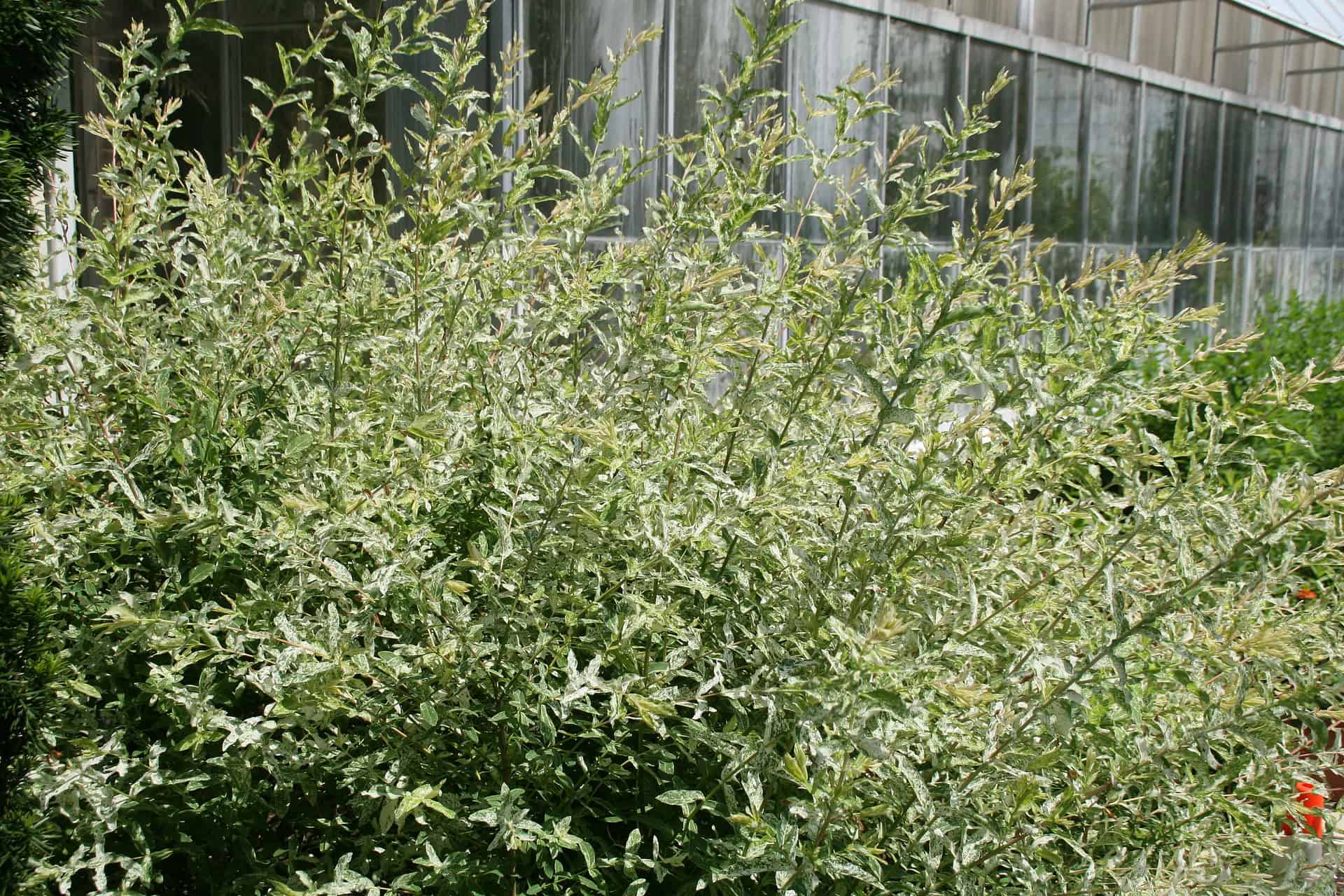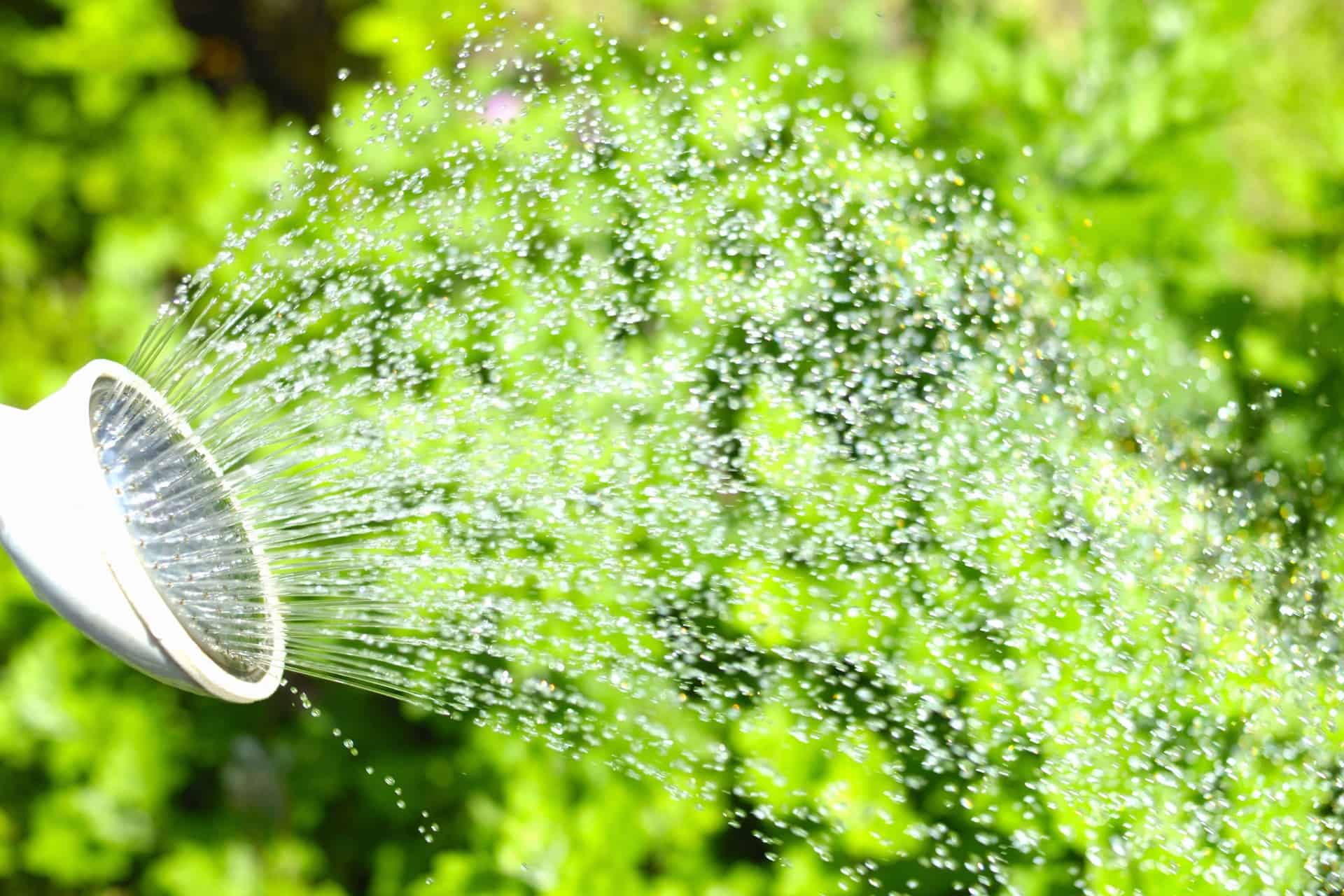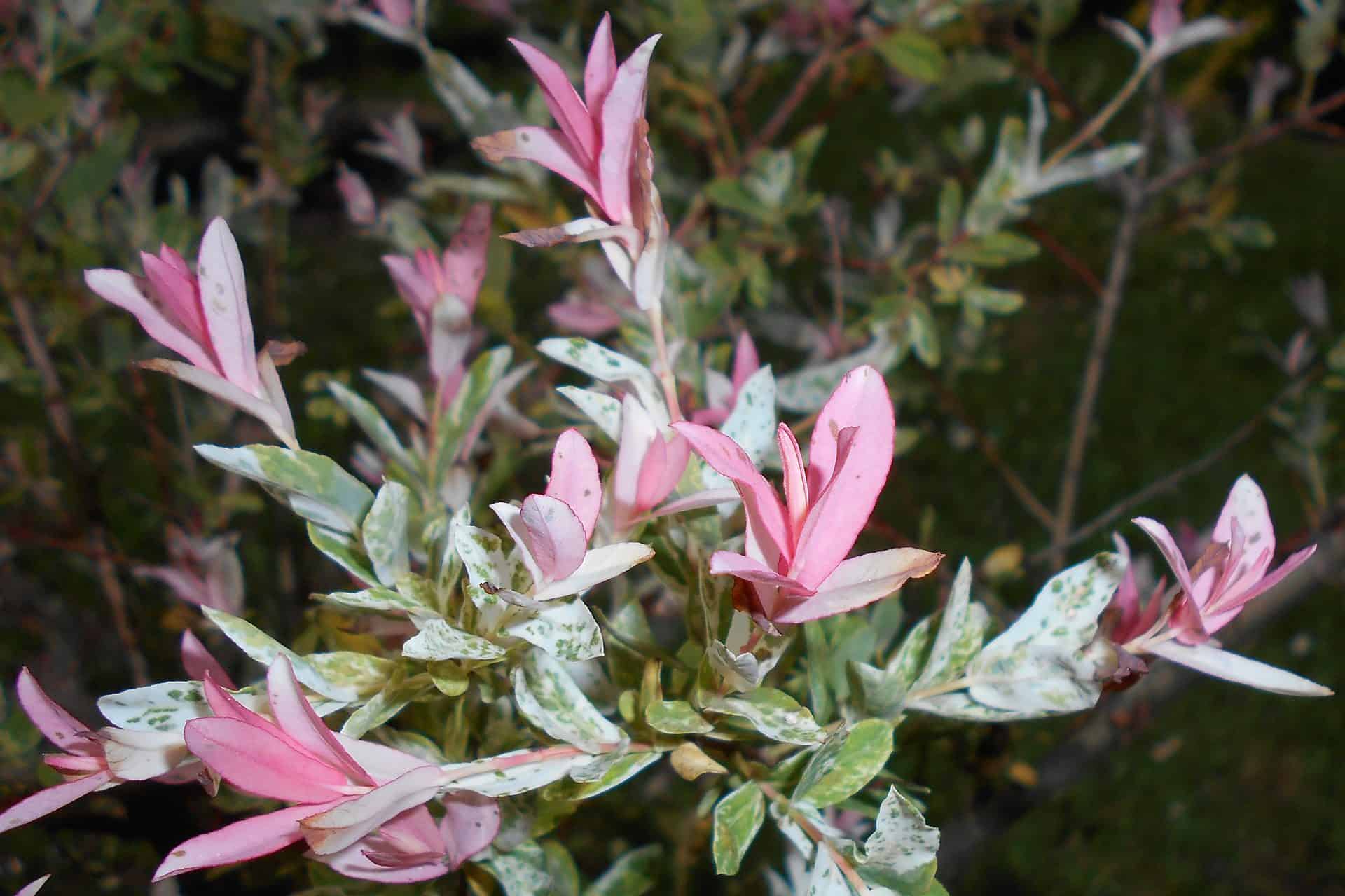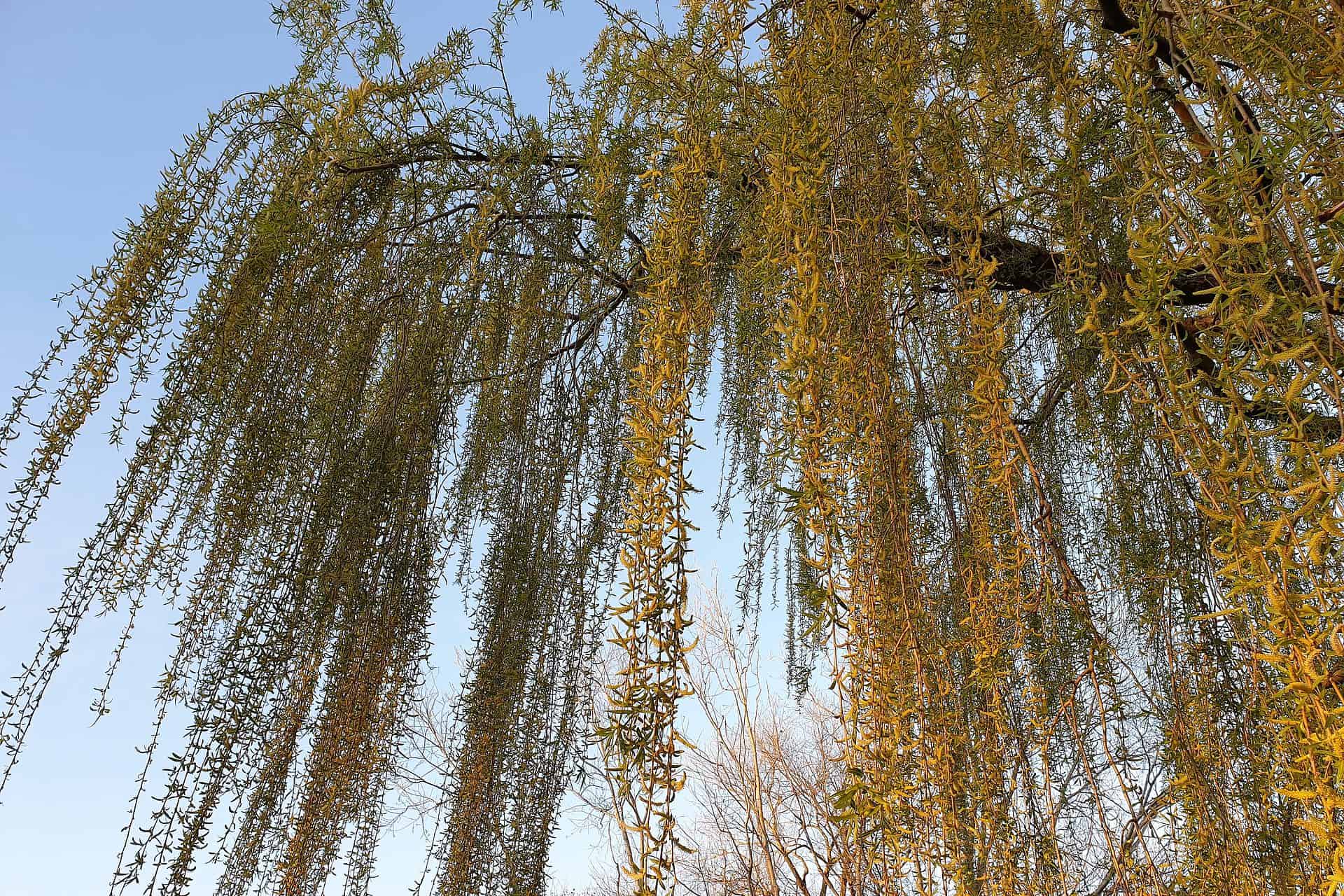No products in the cart.
If you want an accent plant that will surely draw attention, pick the dappled willow tree. Its colorful foliage is a head-turner, adding value and attraction with its variegated white and pink leaves during the Spring season.
What’s more interesting is the variegation fades as new growth in foliage arises. The results are tri-color dappled willows that make every landscape appealing.
But before we get into details on how to grow and care for dappled willow trees, here’s some important information to know about this species.
More About Dappled Willow Tree
The dappled willow tree is a deciduous small tree or shrub that belongs to the Salicaceae or willow family. It’s scientifically known as Salix integra ‘Hakuro Nishiki’ but also goes with many common names such as dappled willow tree, dappled willow shrub, or Japanese willow.
A mature dappled willow can reach a height of 15 to 20 feet tall. However, with consistent pruning, you can maintain it to a height of about 6 to 10 feet. Although it’s a large shrub, the growth structure of dappled willow follows a tree form with an upright willow trunk and arching branches.
They are best grown as hedge borders or as accent plants for your garden.
As a fast-growing species, dappled willows tend to produce invasive roots. Their extensive root system can affect nearby structures such as sewer lines, septic systems, and patios. Hence, it’s best to plant dappled willow at a considerable distance from these types of construction.
The most desirable part of the dappled willow tree is its beautiful foliage. Each leaf has an oblong, narrow shape and is heavily variegated with a tinge of pink, white, and green colors. The variegated dappled willows also change colors depending on the prevailing season.
In the Spring season, the foliage is pink while in Summer, it changes to whitish-green.
Since it’s deciduous, the leaves turn yellow and leaf drop occurs until late autumn. This time, the coral-red stems of the dappled willow are revealed. But don’t worry because the colorful dappled willow leaves will grow back once early Spring arrives.
Dappled Willow Care Guide

Despite its extravagant beauty, you’ll be surprised to know that the care and maintenance of dappled willow trees are easy and undemanding.
Soil

You can plant a dappled willow tree near a stream or other water features because it loves moist but well-drained soil. It can also tolerate poor soil with a slightly acidic to alkaline pH. Dappled willow trees may also grow in sandy soil or clay soil but they may not produce the most beautiful foliage in such soil types.
Light

Dappled willow trees thrive best under full sun. Exposure to direct sunlight for at least 6 hours a day is a favorable condition for dappled willow. It will encourage the growth of more variegated foliage.
It may also tolerate partial shade or partial sun exposure. But you must avoid planting dappled willow trees in a shade garden where there’s no ample sunlight coming in.
Water

When watering dappled willow trees, bear in mind that they love to keep their soil moist or even wet. So make sure to water regularly. During the early stages of growth, you must water your willow plant indoors twice a week, maintaining at least 2 inches of water in the soil.
This is necessary for the tree to develop an extensive root system.
But once you have an established dappled willow, you may decrease the watering frequency to once a week. The technique to properly quench your dappled willow shrubs is to water deeply.
Temperature & Humidity

You can plant outdoor a dappled willow tree in any area under USDA hardiness zones 4 to 6. In areas where temperatures go below 10°F (-12.22°C), dappled willow trees will be in danger. But if your area doesn’t experience this temperature, then your willow tree will flourish throughout the year.
The dappled willow tree isn’t picky about humidity levels.
Fertilizer

Willow tree doesn’t require regular fertilization. But if your plant needs a boost, apply a slow-release fertilizer in early Spring before new growth begins. This will help the dappled willow produce lush foliage.
Propagation
Propagation of dappled willow plants is best done using stem cuttings. Choose stems from your mature willow tree and cut a few at a length of 8 inches. Remove the lower leaves and insert the base into a moist potting mix.
Water it daily to keep the soil moist. The cuttings should develop roots within a month. When new growth is present, you may transplant the cutting.
Pruning

Pruning a dappled willow tree is very helpful in promoting its health. It helps get rid of diseased branches, encourages new growth and keeps the foliage thick, shapes the whole plant into a tree form among others.
The best time to prune dappled willow is during the late winter or very early Spring. You can prune up to 1/3 of the branches. Don’t forget to use sterilized shears.
Other Willow Tree Species
Flame willow

Salix ‘Flame’ is another colorful species in the willow family. The unique thing about it is that it boasts bright orange-red stems during the winter after the leaves were shed. The glowing stems look like flame from afar, hence, its name.
Weeping willow

Weeping willow (Salix babylonica) is one of the popular willow trees. It has a crown of branches that sweep down to the ground. The foliage turns greenish-yellow in the fall season.
American pussy willow

American pussy willow (Salix discolor) is famous for its silky catkins that grow on bare stems which normally appear during late winter to early Spring.
Dappled Willow Tree Common Diseases & Pests
Aphids, caterpillars, leaf beetles, and lace bugs are some of the pests that may feed on dappled willow trees. They bring damage to the leaves and if not controlled, may lead to defoliation. It’s best to constantly check your dappled willow for any presence of these pests before they get out of hand.
Diseases such as powdery mildew, leaf spot, rust, and blight may cause trouble to your dappled willow shrubs. To prevent spread, prune the affected branches. Provide proper spacing between willow trees.
Frequently Asked Questions
Fungal infections such as willow rust disease may cause dappled willow leaves to turn brown. Other reasons could be due to temperature stress (too cold or too hot), or root rot.
This could be a sign of disease, heat stress, overfertilization, or dehydration. You need to carefully investigate the environment to figure out the real cause behind it.
Yes. Dappled willows grow in a container provided that their roots have enough space. Use well-draining soil when potting and make sure the container has enough drainage holes.
Plantly has a variety of options for willow trees that you can check out. Hurry because it’s free shipping now!
Whether you want to buy, sell or simply reach out to other plant enthusiasts, Plantly is the right place to be!


